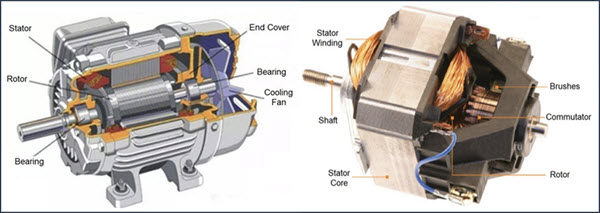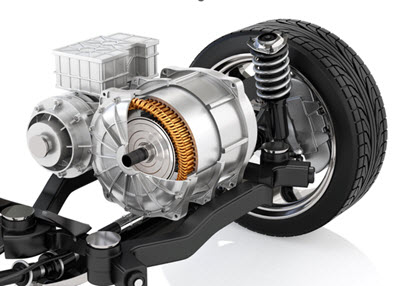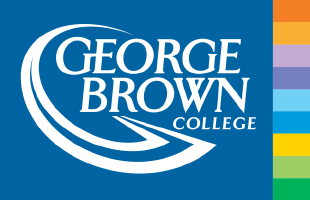The Advantages and Disadvantages of Universal Motors
Though they are not explicitly named for their widespread use, universal motors can, in fact, be found just about everywhere. Open any number of household appliances or industrial machines for example, and chances are you will find a universal motor at its core. But if they aren’t named for the seemingly “universal” applications to which they lend themselves, why are they named as such? To put it simply, universal motors are so named because they can run on both alternate current (AC) and direct current (DC), meaning the “universal” namesake refers to their power supply options.
Having said all of that, the purpose of this article is not to delve into the origin of the term, “universal motor”, but rather to explore what makes this type of motor different from others as well as the various pros and cons of using one.
Universal vs. Induction Motor
Innumerable as the various types of industrial machinery are, they are principally driven by either a universal motor or an induction motor. For the uninitiated, an induction motor uses electromagnetic induction between the stator and rotor to generate current. Typically, you will find induction motors used to power heavy duty and stationary equipment that is in continuous operation for extended periods of time. In a manufacturing setting, this would include things like large industrial fans, mixers, or air compressors. A three-phase induction motor is most notably used in more rugged industrial applications as they are cheaper, easier to maintain and have proven themselves to be exceedingly reliable and durable over the long term. Common applications include oil extraction mills, cranes, and lifts.

Universal motors, for their part, utilize current in a different manner. As stated above, universal motors operate on AC or DC current. While an induction motor can be single or three-phase, universal motors are single-phase series excited motors. Universal motors do not have a permanent magnet stator but relies instead on a series of field and armature windings. The same current flows through each winding courtesy of the series path, resulting in a similar magnetic field in both windings. The interaction of these fields produces unidirectional torque regardless of the power supply.
A universal motor’s stator consists of a projected pole core and winding with a magnetic field. The rotor of the motor is comprised of a projected pole core, armature winding, a commutator, and a rotating shaft. When compared to induction motors, universal motors are much more lightweight and offer superior torque. Whereas a universal motor can generate a high starting torque, an induction motor needs time to achieve a high torque level and cannot be stopped and restarted in rapid succession. Universal motors are ideal when large amounts of power are required in rapid bursts, with a constant level of torque and at variable speeds. Most people rely on universal motors to run their personal power tools but they are also responsible for driving industrial sanders, drills, and saws on the factory floor.

Advantages of a Universal Motor
There are a number of advantages that set universal motors apart. First, there’s cost. The relatively simple construction of a universal motor translates to a much cheaper alternative to induction motors. As mentioned above, universal motors can achieve high levels of torque at variable speeds which opens it up to a greater breadth of applications. Everything from handheld power tools to vacuum cleaners.
As far as motors go, universal motors are both small in size and lightweight; two qualities that lend themselves well to applications that require ease of portability. If all of that wasn’t enough, we must once again reiterate that universal motors can operate using both AC and DC currents.
Disadvantages of a Universal Motor
Like everything else, there are disadvantages to utilizing universal motors. For example, when compared to induction motors, universal motors tend to operate at a louder volume; sound also increases in proportion to the increase in speed. If even slightly unbalanced, a universal motor can generate considerable vibrations which can cause self-damage or damage the piece of equipment it is operating. Since they are less rugged than induction motors, universal motors require more upkeep and maintenance. Two principal universal components, namely carbon brushes and commutators, can wear out over time.
Universal Motors for Almost Every Application
Universal motors are everywhere; and while they may be noisier and require more maintenance than the commonly used alternative, the portability, torque production, and ability to operate on both AC and DC current makes them incredibly useful for many, many applications.
As an Electromechanical Technician, it’s important to know the differences between certain motors, their uses, and advantages as you will encounter them on the job. If you’re looking to upskill or grow your career in electromechanics, check out our Electromechanical Technician program. The program prepares you for the growing electromechanical industry, giving you the in-demand skills, you’ll need to advance in your career.
Comments
Great suggestion, we have…
Submitted by Iris on Wed, 01/04/2023 - 13:48
Great suggestion, we have updated the blog.

A diagram of a universal motor would be nice, comparing with induction motors.
Mike